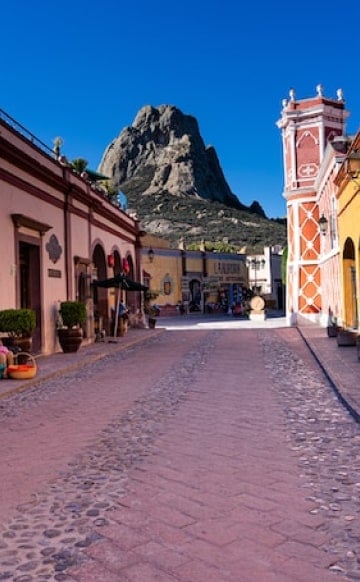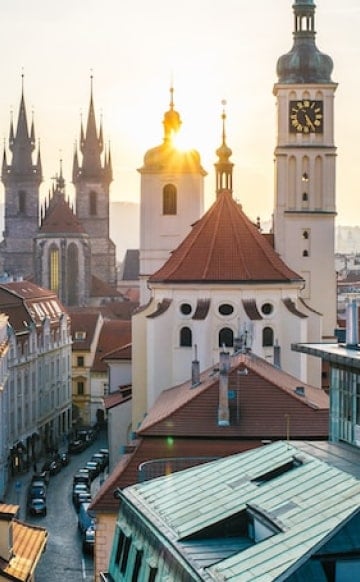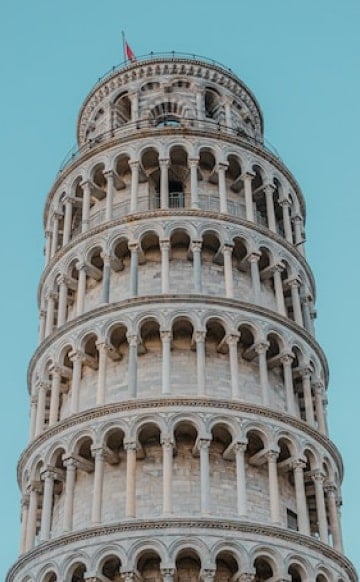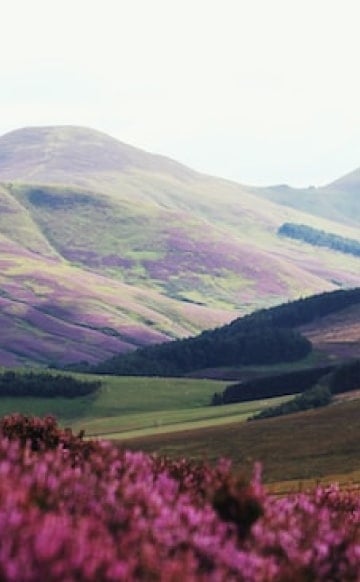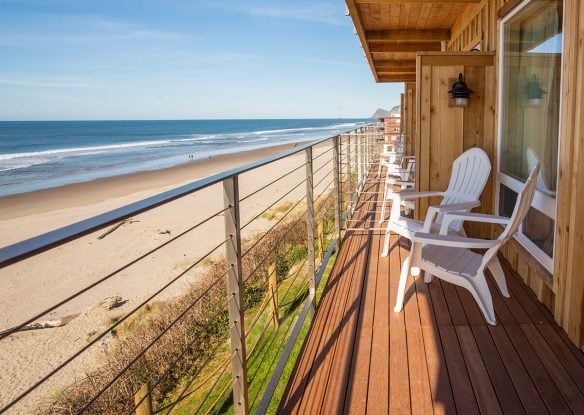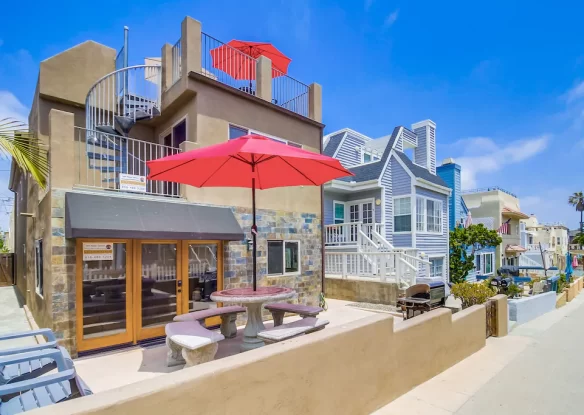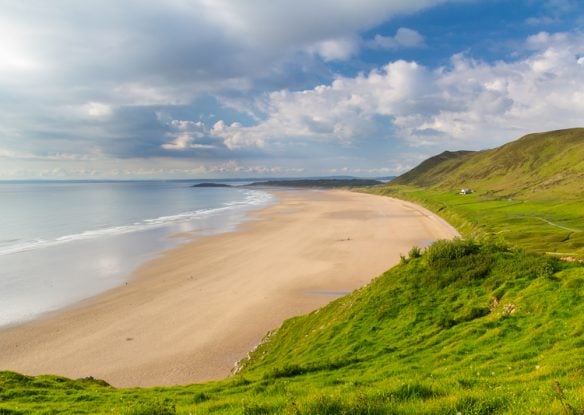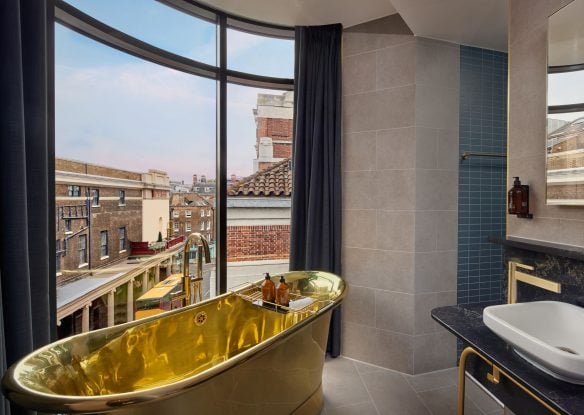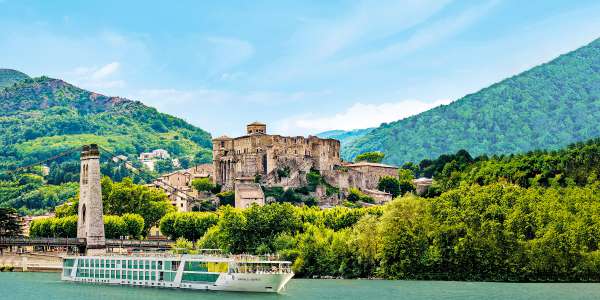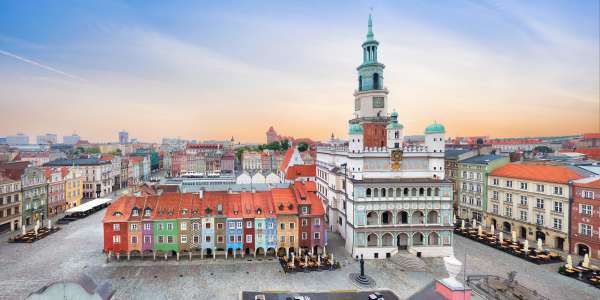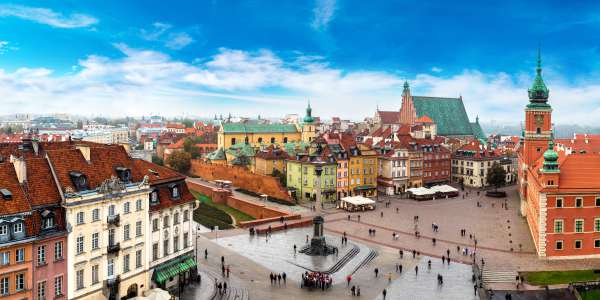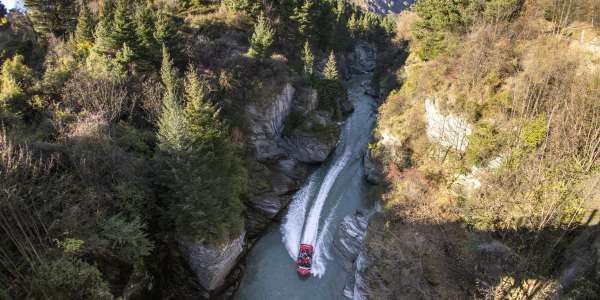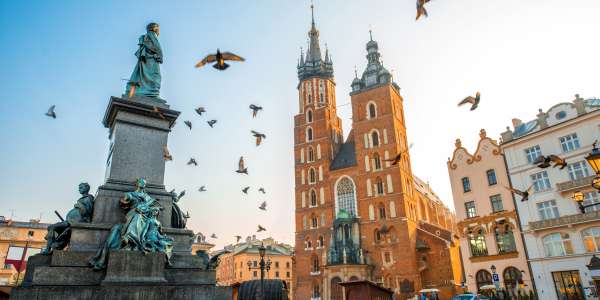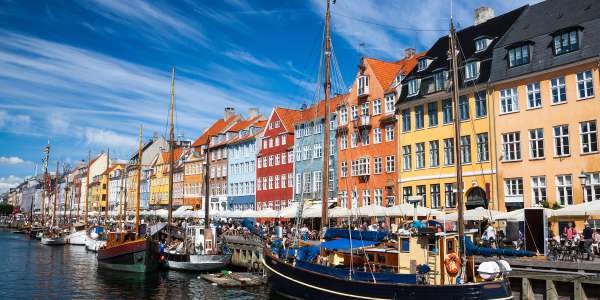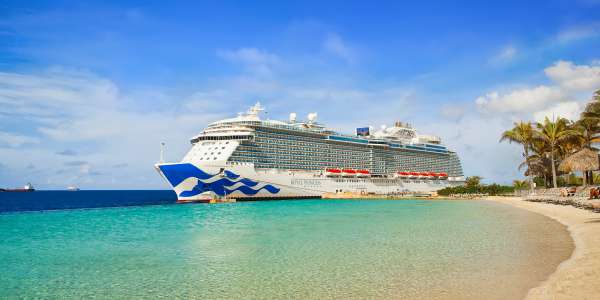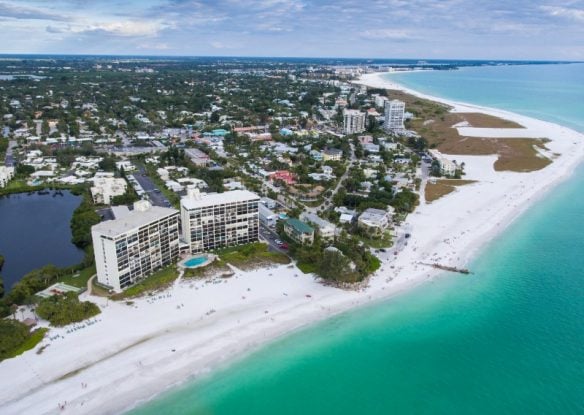As the largest and most populated of the United Kingdom’s four countries, England is home to many great places to visit. From beautiful beaches and picturesque lakes to storybook towns and exciting cities, if you’re planning on traveling to England, these top destinations are some of the best.

London
Of course, most visitors to England will arrive in London – and the cosmopolitan city is well-worth spending at least a few days in. It’s home to a long list of famous sights as well as beautiful green spaces, endless shopping, an exciting nightlife, and a long, dramatic history. It also boasts some of the best museums and art galleries on the planet, many of which are free. See the city from above by riding the London Eye, check out some of the most precious treasures in the world at the British Museum, or run into a celebrity at Madame Tussauds. You’ll never be bored here with the incredible range of buzzing bars, top-of-the-line restaurants, theaters and an array of events on offer, from sports to music festivals and everything in between.

Liverpool
Some say Liverpool is England’s friendliest city. Of course, it’s well known as the place that birthed The Beatles, though you’ll find a lot more to do here than go on a Beatles tour and visit The Beatles Museum. In fact, you’re seriously missing out if you come here just for the Fab Four. The city offers a combination of maritime-heritage architecture, world-class museums and cultural attractions that are easily accessed within a one-mile stretch along the Mersey. Spend time in the pubs chatting with the locals, check out the stunning cathedrals, go shopping at Liverpool One and enjoy the area beaches. If you’re into clubbing, you’ll find a hopping nightlife, and art lovers will appreciate Liverpool’s excellent art scene.

Bath
Some say Bath is England’s most beautiful small city, named for its natural hot springs that served as ancient Roman baths 2,000 years ago. And, today, it’s the only place in the United Kingdom where you can bathe in naturally hot, mineral-rich spa waters just like the Romans did way back then. Enjoy rooftop spas with magnificent views over this Georgian city that’s loaded with stunning architecture, dine in award-winning restaurants and stay in romantic B&Bs or luxurious hotels. Visitors can take a self-guided audio tour of the Roman Baths, still bubbling with the same water from ancient times, explore numerous museums, like the Bath Aqua Theatre of Glass and the Jane Austin Centre, a shrine to the city’s most famous resident.

St. Albans
St. Albans is one of England’s oldest cities. It was the first major town on the old Roman road of Watling Street for those who were traveling north, and became the Roman city of Verulamium, though its history even pre-dates the Roman invasion. This unique English Cathedral City has a colorful history that can be seen in its gorgeous medieval architecture, including St. Albans Cathedral. The Cathedral dominates the city’s skyline from every approach. Its architecture is a blend of a number of different periods, and its great tower includes Roman bricks salvaged from the ruins of Verulamium. At the Verulamium Museum, you’ll find beautiful objects displayed from the Roman City, including mosaics and re-created Roman rooms. Just a short stroll away is the Roman Theatre, the only visible example in Britain. St. Albans is also known for its picturesque green parks, a buzzing metropolis with lots of small, independent shops and a wide range of eateries.

Cotswolds
The Cotswolds is an expanse of gently sloping green hills and ancient, pretty towns and villages in south-western and west-central England that look as if they’ve stepped out of the pages from another era. Its English charm predominantly spans the counties of Gloucestershire and Oxfordshire, while also reaching into parts of Wiltshire, Somerset, Worcestershire and Warwickshire, and is the biggest of the 38 Areas of Outstanding Natural Beauty in England and Wales. The area is crisscrossed with hedgerows, dotted with sheep and storybook villages, like the tiny and alluring villages of Stanway, Stanton and Snowshill that are often missed by travelers who head to the more famous places like Stow-on-the-Wold and Bourton-on-the-Water. Autumn is an especially wonderful time to be here, when visitors can enjoy colorful leaf-peeping, particularly at the two great arboreta, Westonbirt and Batsford, though the wonderfully uncrowded winters are ideal for fireside pub sessions. It’s also full of charming hotels where you can stay overnight to explore the region more.

Dover
Dover, located in White Cliffs Country, offers a rich, fascinating history as well as peaceful countryside and a breathtaking coastline, with its “White Cliffs,” it’s most visible icons that stretch for five miles along the coast. This area has a unique place in history, with Dover playing an integral role in World War II due to its strategic placement on the narrowest part of the English Channel. You could easily spend weeks exploring the region’s castles, like Dover Castle, which served as a fortress against invaders from Roman times, as well as the “Secret War Time Tunnels” that are found deep inside the cliffs, once used as an underground hospital and a military enclave.

Cornwall
Cornwall, in the far southwest corner of England, is defined by its spectacular coastline with 300 miles of dunes and cliffs, medieval harbors and oak-forested creeks, and every inch of it is accessible on foot. This is a place for both adventures and relaxation, from swimming with seals and basking sharks and climbing down the stepping-stone cliffs to explore rock pools to surfing and bodyboarding, with lessons available on many of the beaches. Photographers and artists of all types are drawn here for the area’s rugged beauty, big skies and incredible light in winter, when the cerulean seas become an even more brilliant blue. The south coast, known as the “Cornish Riviera,” is home to sheltered beaches where several broad estuaries offer safe spots for anchoring boats, while Polperro is widely considered the most picturesque fishing village in Cornwall.

Cambridge
Cambridge is located on the River Cam and is similar to England’s other ancient university town, Oxford, but it’s a little smaller and less busy. Tick off some of Cambridge’s top attractions on a visit, including the country’s most famous buildings, the Chapel of Kings College, where you can listen to the amazing choir at a service. Enjoy viewing one of the best art collections in England outside of London at Fitzwilliam Museum, or just take a walk through the meadows where you can relax and sip tea at The Orchard, a tea room where time seems to stand still – and, more famous people have sipped the beverage here than anywhere else in the world.

York
York has been called the “Great City in the North,” showcasing the biggest medieval cathedral in northern Europe, York Minster, as well as offering hundreds of attractions, historic buildings, shops, restaurants and museums, ranging from the York Castle Museum to the Yorkshire Museum, all within a compact, walled city. One of its must-see attractions is York Dungeon, which uses interactive shows, special effects and displays of models and objects to depict some of the most horrific local history like witches being burnt, the evil Dick Turpin and the stories of Vikings. The Shambles, a famous alley lined with 15th-century shops, is also a must-visit, and be sure to take in the sweeping panoramic views of York and the surrounding countryside from Clifford’s Tower, which stands as a proud symbol of the power of England’s medieval kings.

Devon
Visitors are usually drawn to Devon because of its picturesque beaches on the north and south coasts as well as excellent surf breaks, but it offers a lot more than the sand and the sea. History buffs can explore Tintagel castle, a legendary birthplace of King Arthur, and the seat of the kings of Cornwall, while music lovers will find a myriad of festivals held here every year, like the St Ives Festival, Rock Oyster Festival and countless others. Feast on fine food made from the rich array of offerings right at Devon’s doorstep, like venison, lamb, pork, pheasant and seafood, along with outstanding local produce that can be found in the many farmers’ markets. The capital of Devon, Exeter, is an ideal place to base your stay, with close proximity to area beaches, an array of shops and fantastic street food from pulled pork wraps to spicy curries that can be sampled every Friday, Saturday and Sunday in the courtyard of the Guildhall Shopping Centre.

Salisbury and Stonehenge
Salisbury and nearby Stonehenge are must-visits on any trip to England. Located less than a two-hour drive from London, the city is one of the most historically important in the country. Its home to the Magna Carta, found at Salisbury Cathedral, which formed the basis of England’s laws for centuries. Built in the 13th century, the cathedral has the tallest spire in all of Britain at 404 feet high and it also boasts a mechanical clock dating from 1386. Just eight miles north of the city is Stonehenge, a legendary ancient stone circle made up of massive standing stones that were built over in several phases sometime between 3000 and 2200 BC – radiocarbon dating conducted in 2008 suggested that the first stones were raised between 2400 and 2200 BC, although another theory suggests they were raised at the site as early as 3000 BC. The 40-ton rocks were dragged through the desolate plain to Salisbury Hill – whether it was created as a religious temple, burial ground or astronomical clock has never been proven.

Lake District
The Lake District is renowned for having some of the finest scenery in England, with the greenest countryside and grandest views. Home to both William Wordsworth and Beatrix Potter no trip to the U.K. is really complete without a stop off here. In the summer, canoeing, windsurfing and sailing are all popular, and while you can take a dip to cool off after a long hike, the water is generally too cold to stay in for any length of time. Riding down the country lanes on a bike or taking a hike across the lush hills are popular activities any time the weather allows. In the fall, the beautiful autumn light makes it even more breathtaking, with the lakes surrounded by gold and ruby-colored hills. Of course, the weather here is also notoriously unpredictable, but that just offers the perfect excuse to duck into one of the area’s cozy pubs for a pint of local ale or cider.

Brighton
You’ll never get bored in this picturesque seaside city. Popular in all seasons, and often packed on a hot summer’s day, its waterfront is bursting with lively bars and eateries that are famous for traditional fish ‘n’ chips, while the pier features arcades, rides and lots of other attractions. Adjacent to the iconic pier is the world’s oldest aquarium, Sea Life Brighton. If you like to shop, head over to boho North Laine where you’ll discover offbeat designers and interesting flea markets among the more upscale restaurants and pubs. Don’t miss the Royal Pavilion, one of the most flamboyant royal residences on the planet. It was designed for the fun-loving prince regent, later George IV, who lived here with his mistress until 1827. The extravagant structure is a fantasy of minarets, Chinese motifs and turrets.

Norfolk
Among the undulating countryside and sleepy villages of Norfolk, you’ll find at least a dozen medieval castles as well as ancient churches, stately homes and fascinating museums. Beach lovers can take advantage of three amazing seaside resorts, including Golden Mile and Pleasure Beach in Great Yarmouth – even on the cold, crisp days of winter, the beach areas are often filled with hikers and dog walkers. In the lively Georgian towns of Holt and Burnham Market, shoppers can shop ‘til they drop at a wide variety of stores and boutiques. This county may be most famous for its man-made Broads, a magical waterland with more than 125 miles of navigable lock-free waterways set among a tranquil landscape, where the woodlands, marshland fields and feather reeds offer the perfect opportunity for adventure as well as relaxation.

Colchester
Colchester is a lovely provincial town and the country’s oldest recorded town. Some of the most important events in British history have taken place in and around Colchester, with the Romans, Saxons, Normans and Victorians all leaving their mark. It boasts a number of historic buildings, a Norman Castle and a Roman wall that dates from Colchester’s time as the capital of Britain. There are several museums too, like the Natural History Museum, the Hollytrees Museum and the Castle Museum. There are plenty of modern delights too, including a wide range of small, independent shops that sit alongside big name stores, and if you’re looking for nightlife you can choose from a wealth of bars, pubs and clubs as well as theater and comedy venues

Suffolk
Suffolk is one of England’s less touristy regions, yet it’s filled with charming villages, and its picturesque countryside is dotted with thatched cottages, along with a few impressive forts and ancient abbeys. The beaches that fringe its coastline have space for kite-flying, picnics and games, even on the busiest summer days. In Lavenham, often acclaimed as England’s Best-Kept Medieval Village, you’ll find ancient half-timbered merchants’ houses lining the winding streets, now serving as enticing shops and tea rooms as well as fantastic restaurants. Harry Potter fans will appreciate the fact that this is the place Harry Potter was born, featured in ‘The Deathly Hallows Part 1 & Part 2. No matter which village you take time to stop in, you’ll never be far from a cozy pub with local ales on a tap or a fabulous deli that sells area specialties like honey, smoked fish and pungent cheeses.

New Forest
Located in England’s southeast, New Forest was originally created as a hunting forest by William the Conqueror in 1079. In 2005, it became a national park and today, it’s a popular place for outdoor activities, as well as sighting New Forest ponies, with about 3,000 of them wandering throughout the forest. The animals are free to roam where they will, as they have for centuries, but they’re actually owned by commoners with rights of pasture in the park – this unique pony traces its lineage back nearly a thousand years. You’ll also spot deer and cattle that roam free in the woodland and ancient heaths in this vast area of nearly 220 square miles. Clear rivers and shady groves provide peace and tranquility as well as a car-free haven for walking, biking and horse riding.

Canterbury
Canterbury is a cathedral and university city that has become a popular tourist destination. Although it was relentlessly bombed during the Second World War, it still contains many ancient buildings, with modern building development strictly regulated in its medieval town center. Architectural gems can be found around practically every corner, including Canterbury Cathedral, the burial place of King Henry IV and Edward the Black Prince, although it’s most famous as the scene of the murder of Thomas Becket in 1170. Visiting this working and living church is an unforgettable experience. It can be explored through guided and audio tours, or with its incredible atmosphere and acoustics, it makes a perfect venue for the concerts and performances that are held here. At the Roman museum, you can view parts of a Roman house, including some gorgeous mosaic floors. Other must-sees include the ruins of 11th-century Canterbury Castle and St. Augustine’s Abbey.

Chester
Close to the border of Wales, Chester sits along the banks of the River Dee in Cheshire. The more than 2,000-year-old city has a rich history, along with stunning architecture that spans several eras. The Roman walls encircling the city are one of its biggest tourist attractions, while the historic clock on Eastgate Street is the second most photographed clock in the country and Chester’s best-known landmark. Explore the city via the water with a half-hour cruise on the River Dee, longer cruises go to the Eaton Estate, home of the Duke of Westminster, to Ironbridge, as well as the village of Eccleston on the Grosvenor Estate. If you like to shop, Chester has been named one of England’s best shopping cities, boasting a wide variety of smaller, independent shops as well as big-name chain stores.

Yorkshire
Yorkshire offers the quintessential experience in the English countryside, home to lush, rolling hills and endless charming villages as well as some of the country’s most magnificent homes and museums. Yorkshire also happens to boast more Michelin-starred restaurants than anywhere else in the nation, apart from the busy streets of London. It’s famous for multiple tasty treats like Yorkshire puddings, Yorkshire tea and Parkin and Wensleydale cheese, many of which can be enjoyed in cozy tearooms, while its landscapes have inspired generations of painters, including David Hockney’s Yorkshire Wolds and the delight moonscapes of John Atkinson Grimshaw. The region truly offers something for everyone, whether you’re seeking peace and solitude or a bit of adventure.

Avebury
Avebury, located about a 40-minute drive north of Stonehenge, is believed to even rival its better-known counterpart as the most impressive, largest and complex prehistoric site in the country. It was believed to have been constructed between 2850 and 2200 BC, though it has just as much mystery surrounding it as Stonehenge. It appears as a massive circular bank and ditch, enclosing a 281-acre acre that includes part of Avebury village. Within it, is an inner circle of great standing stones that enclose two more stone circles. Much of the village of Avebury revolved around the stone circle – in fact, it was the setting for the 1977 cult TV series, “Children of the Stones,” which depicts Avebury as a town controlled by the stones. Its 17th-century pub claims to be the only pub in the world to be enclosed by a stone circle – it was built around the 86-foot-deep village well that’s been covered over with glass and now serves as a dining table.


